Jan 11: Ayyappa Satsang with Br. Ramanand
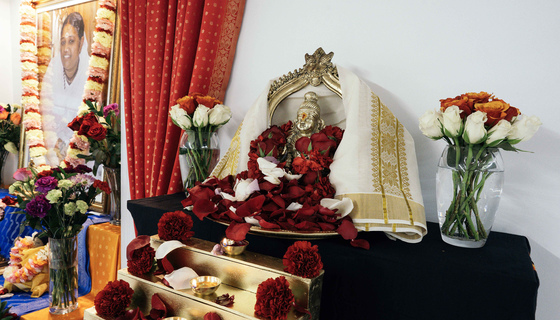
Ayyappa Satsang with Br. Ramanand
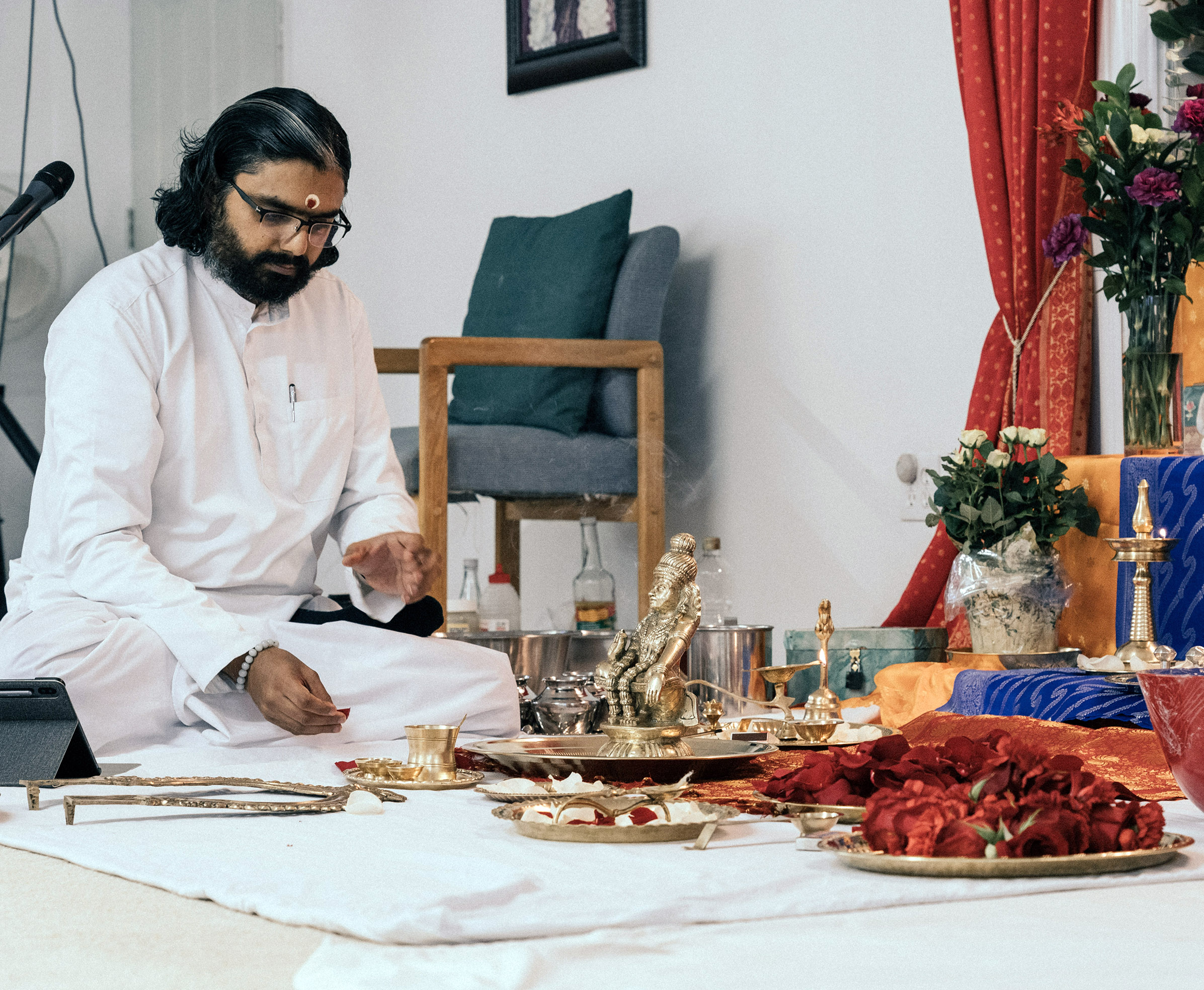 On Saturday, January 11, amidst heavy rain, over one hundred devotees gathered in Georgetown for a special Ayyappa Satsang, led by Br. Ramanand. Lord Ayyappa has long been revered in South India, particularly in the state of Kerala, but is generally less well known outside these areas. Ramanandji explained how Lord Ayyappa manifested to destroy the buffalo-demoness, Mahishi, just as Goddess Durga manifested to destroy Mahishi's brother, the buffalo-demon, Mahishasura. In Hindu mythology, the buffalo represents the quality of Tamas, which is associated with ignorance, inertia, delusion, sloth, and lust. When tamas predominates, it leads to Adharma (unrighteousness) and destruction. As Lord Krishna says in the Bhagavad Gita, Chapter 4, verse 7: "Whenever there is a decline in Dharma (righteousness) and a rise in Adharma, then I manifest Myself (in a form)." Mahishasura had the boon that he could not be killed by a man, so God manifested in the female form of Ma Durga to destroy him. Likewise, Mahishi had a boon that she could only be killed by the son of Lord Vishnu and Lord Shiva.
On Saturday, January 11, amidst heavy rain, over one hundred devotees gathered in Georgetown for a special Ayyappa Satsang, led by Br. Ramanand. Lord Ayyappa has long been revered in South India, particularly in the state of Kerala, but is generally less well known outside these areas. Ramanandji explained how Lord Ayyappa manifested to destroy the buffalo-demoness, Mahishi, just as Goddess Durga manifested to destroy Mahishi's brother, the buffalo-demon, Mahishasura. In Hindu mythology, the buffalo represents the quality of Tamas, which is associated with ignorance, inertia, delusion, sloth, and lust. When tamas predominates, it leads to Adharma (unrighteousness) and destruction. As Lord Krishna says in the Bhagavad Gita, Chapter 4, verse 7: "Whenever there is a decline in Dharma (righteousness) and a rise in Adharma, then I manifest Myself (in a form)." Mahishasura had the boon that he could not be killed by a man, so God manifested in the female form of Ma Durga to destroy him. Likewise, Mahishi had a boon that she could only be killed by the son of Lord Vishnu and Lord Shiva.
Thinking that the union of two male gods could never produce a child, Mahishi thought herself invincible. Lord Vishnu, however, took on the female form of Mohini to unite with Lord Shiva, and produce the a divine son, Ayyappa, who vanquished Mahishi. Since Lord Ayyappa is the son of both Vishnu and Shiva, He is worshipped both as Protector and Deliverer in one Divinity.
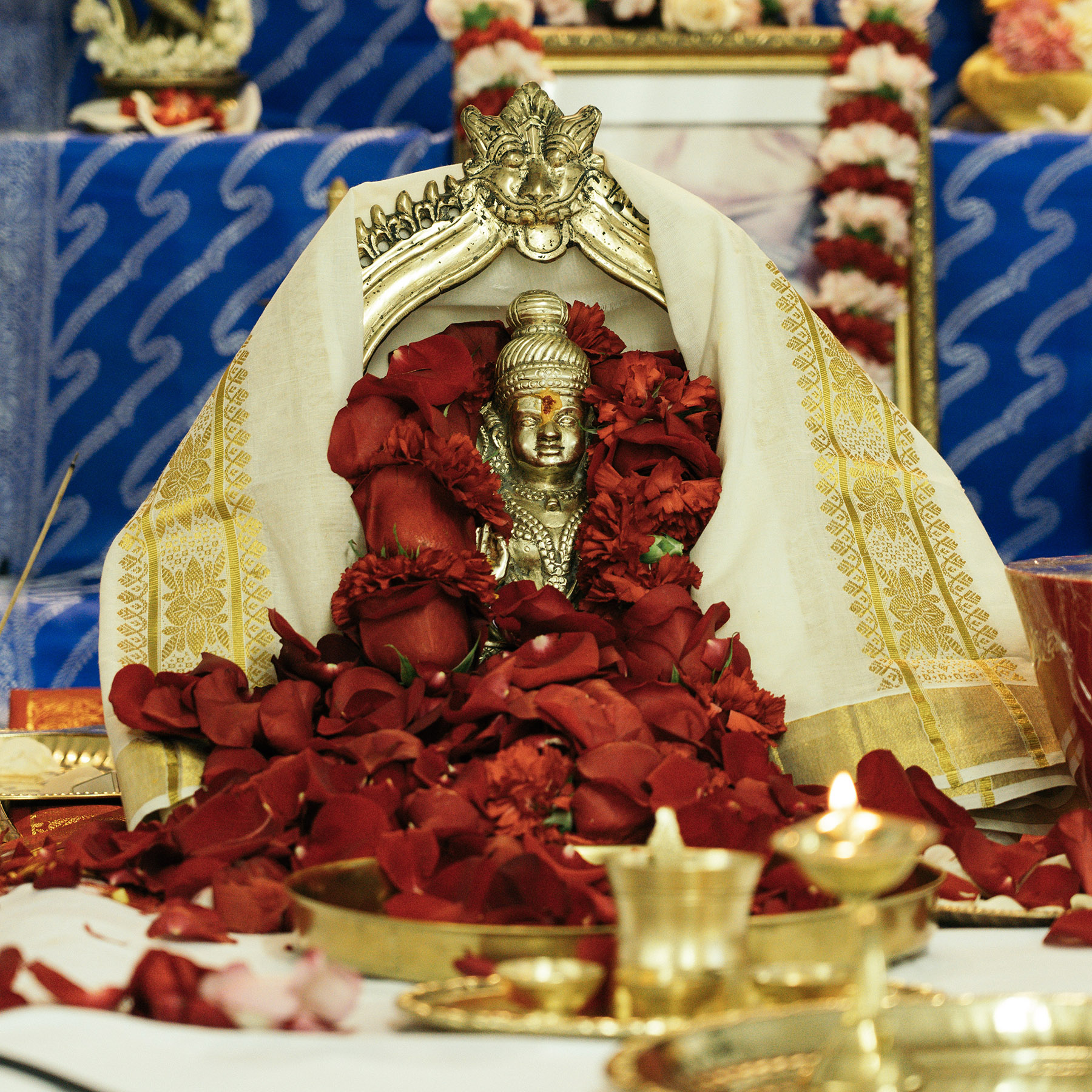 Ayyappa is called Dharma Shasta (Lord of Dharma) because he fights for the restoration of right conduct and justice. Though he was raised as the adopted son of the King and Queen of Pandala, Ayyappa renounced worldly wealth and position, to live as a renunciate warrior and yogi in the forest. He is often portrayed as riding on a tigress, like Ma Durga, symbolizing how He has conquered the lower animal tendencies of passion and anger. Ayyappa is also a symbol of community and religious harmony. Legend has it that Ayyappa once met in the forest the Muslim robber, Vavar. Vavar was won over by Ayyappa's might and righteousness. He resolved to change his ways and become and honest man. Over time, their friendship grew, with Vavar eventually becoming Ayyappa's most loyal and trusted lieutenant, the two fighting demons side by side. Today, a mosque dedicated to Vavar stands at the start of the path that leads to Sabarimala, the site of a highly significant Ayyappa temple, and pilgrims offer prayers there before beginning their trek to the holy temple to have darshan of Lord Ayyappa.
Ayyappa is called Dharma Shasta (Lord of Dharma) because he fights for the restoration of right conduct and justice. Though he was raised as the adopted son of the King and Queen of Pandala, Ayyappa renounced worldly wealth and position, to live as a renunciate warrior and yogi in the forest. He is often portrayed as riding on a tigress, like Ma Durga, symbolizing how He has conquered the lower animal tendencies of passion and anger. Ayyappa is also a symbol of community and religious harmony. Legend has it that Ayyappa once met in the forest the Muslim robber, Vavar. Vavar was won over by Ayyappa's might and righteousness. He resolved to change his ways and become and honest man. Over time, their friendship grew, with Vavar eventually becoming Ayyappa's most loyal and trusted lieutenant, the two fighting demons side by side. Today, a mosque dedicated to Vavar stands at the start of the path that leads to Sabarimala, the site of a highly significant Ayyappa temple, and pilgrims offer prayers there before beginning their trek to the holy temple to have darshan of Lord Ayyappa.
Sabarimala (literally Mount Sabari, about 3000 feet above sea level) is a favorite Ayyappa temple in Kerala that is only open from mid-November to mid-January, and for the first five days of each Malayalam month.
Sabarimala temple is open to all, irrespective of caste, creed, religion, social status, or nationality. Pilgrimage to this temple symbolizes the journey to heaven. This journey is difficult and adventurous: pilgrims observe severe austerities, wearing rudraksha or tulsi beads strings on their necks, and trek up the dense forest filled with wild animals to reach the temple. The pilgrims undergo 41 days of fast to cleanse the mind. They carry on their head, precious ghee (clarified butter) for the Lord's abhisheka (ceremonial bath performed in worship) in an irumudi (two compartment cloth bag). The feeling of delight and spiritual elevation one gets when devotees have the darshan of the deity is remarkable. The magnetic charm is so high, it makes any devotee who undertakes the yatra (pilgrimage) once, want to revisit the shrine every year in quest of spiritual solace.
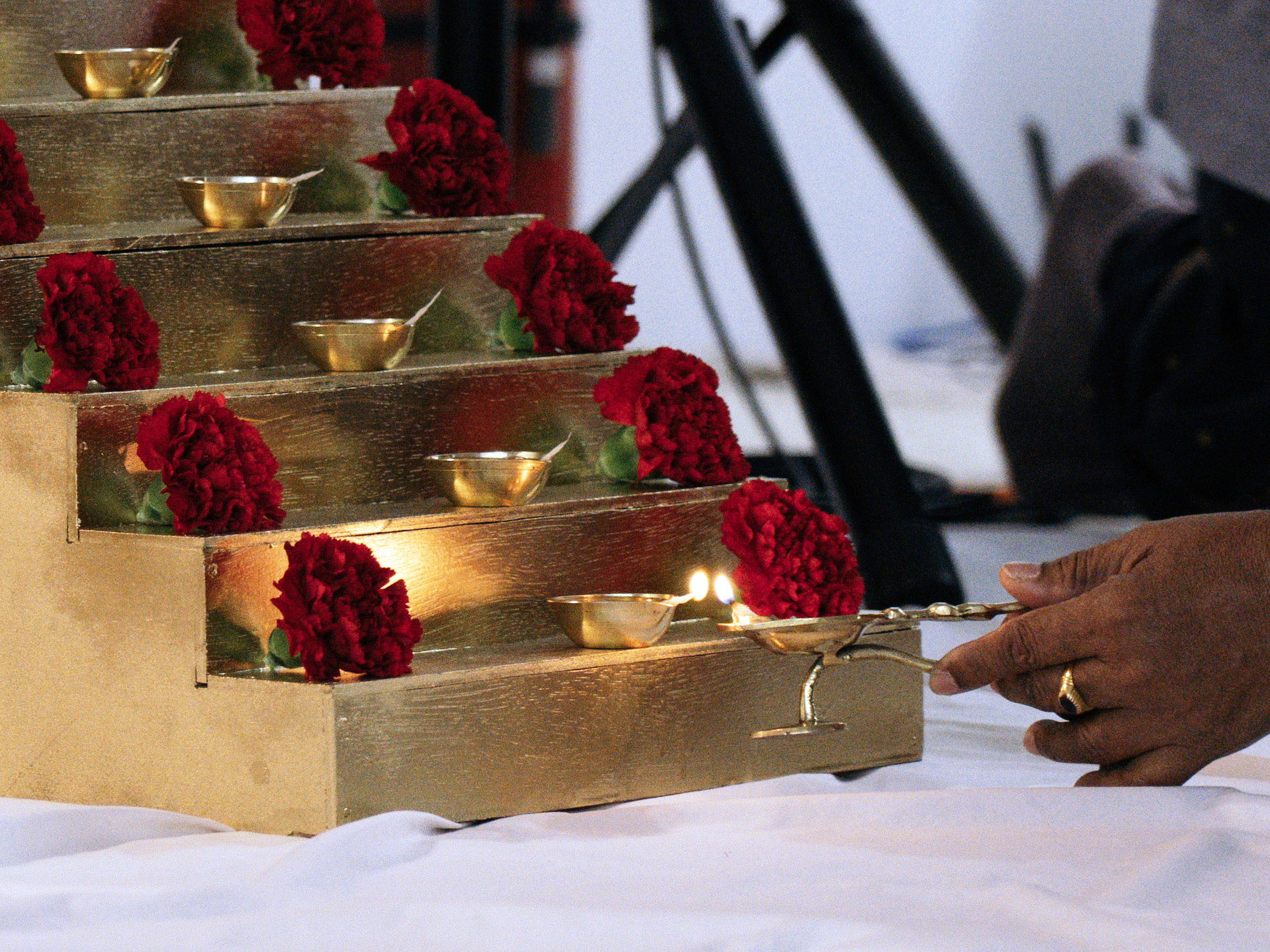 The Pathinettapadi (18 divine steps) to the Sanctum Sanctorium of Sabrimala temple are highly revered. Every Ayyappa devotee, before he sees the Sanctum Sanctorum, has to lay his footsteps over these eighteen sacred steps. The first five steps symbolize the five human senses (Panch Indriyas) i.e. visual (vision), auditory (hearing), olfactory (smell), gustatory (taste) and tactile (touch). These signify the `mortal’ nature of one’s body. The next eight steps symbolize the eight passions or Ashta Ragas, i.e., Kama, Krodha, Lobha, Moha, Madha, Matsarya, Asooya, Dhumb (Desire, Anger, Covetousness, Infatuation, Pride, Miserliness, Jealousy and Boastfulness). The next three steps stand for three qualities of Nature or Tri Gunas i.e. Sattva, (perspicuity, discernment) , Rajas (activity, enjoyment) and Tamas (inactivity, stupor). The last two steps represent Vidya (Knowledge) and Avidya (Ignorance).
The Pathinettapadi (18 divine steps) to the Sanctum Sanctorium of Sabrimala temple are highly revered. Every Ayyappa devotee, before he sees the Sanctum Sanctorum, has to lay his footsteps over these eighteen sacred steps. The first five steps symbolize the five human senses (Panch Indriyas) i.e. visual (vision), auditory (hearing), olfactory (smell), gustatory (taste) and tactile (touch). These signify the `mortal’ nature of one’s body. The next eight steps symbolize the eight passions or Ashta Ragas, i.e., Kama, Krodha, Lobha, Moha, Madha, Matsarya, Asooya, Dhumb (Desire, Anger, Covetousness, Infatuation, Pride, Miserliness, Jealousy and Boastfulness). The next three steps stand for three qualities of Nature or Tri Gunas i.e. Sattva, (perspicuity, discernment) , Rajas (activity, enjoyment) and Tamas (inactivity, stupor). The last two steps represent Vidya (Knowledge) and Avidya (Ignorance).
The Ayyappa Satsang began with guided meditation by Ramanandji, followed by bhajans honouring the Guru (Amma), and Lord Ganesha. Then, Br. Ramanand performed abhishekam or ceremonial bathing of the murthi or form of Ayyappa with five sacred liquids: water, milk, yogurt, ghee, and honey, while a devotee led the chanting of Ayyappa Saranam Vili, 108 mantras for the worship of Lord Ayyappa. The gathered devotees chanted 'Saranam Ayyappa' after each verse. After singing a couple bhajans in praise of Lord Ayyappa, Ramanandji then lead the group in perform twenty-three Ayyappa namaskaram or prostrations to Lord Ayyappa, while he chanted the Namaskaram Slokah. While doing the prostrations with reverence, devotees visualized leaving all their troubles and burdens at the feet of Dharma Shasta.
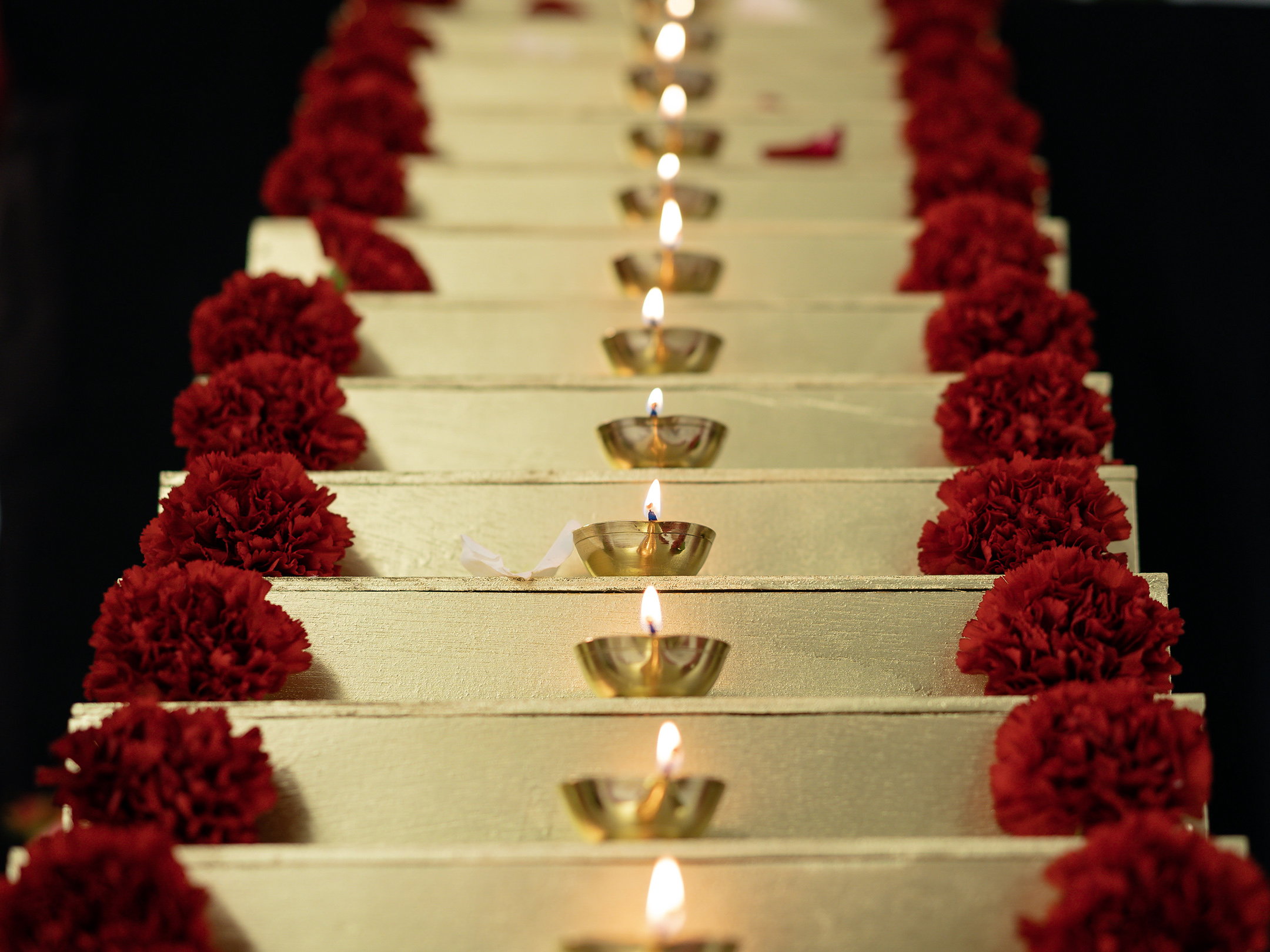 Once this was complete, the murthi of Lord Ayyappa was placed at the top of the model of the Pathinettapadi, and eighteen devotees prepared to light a lamp on each of the steps. Br. Ramanand lead the chanting of the Ayyappan Padi Pattu, a song that reveres each of the eighteen divine steps that lead to the Sanctum Sanctorum of the Sabarimala temple. As each step was mentioned, a devotee would come forward and light the lamp on that step, with all present remembering the quality that that particular step represents. In this way, the group visualized together climbing the Pathinettapadi, and transcending the senses, the passions, the qualities of nature, and even ignorance and knowledge, to reach the Supreme. Br. Ramanand then lead the group in chanting Harivarasanam, a beautiful devotional song to Lord Ayyappa that is traditionally sung as a lullaby (urakku paattu) after the evening worship (Athazha Puja). The Ayyappa puja concluded with chanting of the Mangalam and Arati to Lord Ayyappa, followed by Amma's Arati, and closing prayers. The devotees then enjoyed a delicious prasad feast together, as one.
Once this was complete, the murthi of Lord Ayyappa was placed at the top of the model of the Pathinettapadi, and eighteen devotees prepared to light a lamp on each of the steps. Br. Ramanand lead the chanting of the Ayyappan Padi Pattu, a song that reveres each of the eighteen divine steps that lead to the Sanctum Sanctorum of the Sabarimala temple. As each step was mentioned, a devotee would come forward and light the lamp on that step, with all present remembering the quality that that particular step represents. In this way, the group visualized together climbing the Pathinettapadi, and transcending the senses, the passions, the qualities of nature, and even ignorance and knowledge, to reach the Supreme. Br. Ramanand then lead the group in chanting Harivarasanam, a beautiful devotional song to Lord Ayyappa that is traditionally sung as a lullaby (urakku paattu) after the evening worship (Athazha Puja). The Ayyappa puja concluded with chanting of the Mangalam and Arati to Lord Ayyappa, followed by Amma's Arati, and closing prayers. The devotees then enjoyed a delicious prasad feast together, as one.
Saranam Ayyappa

